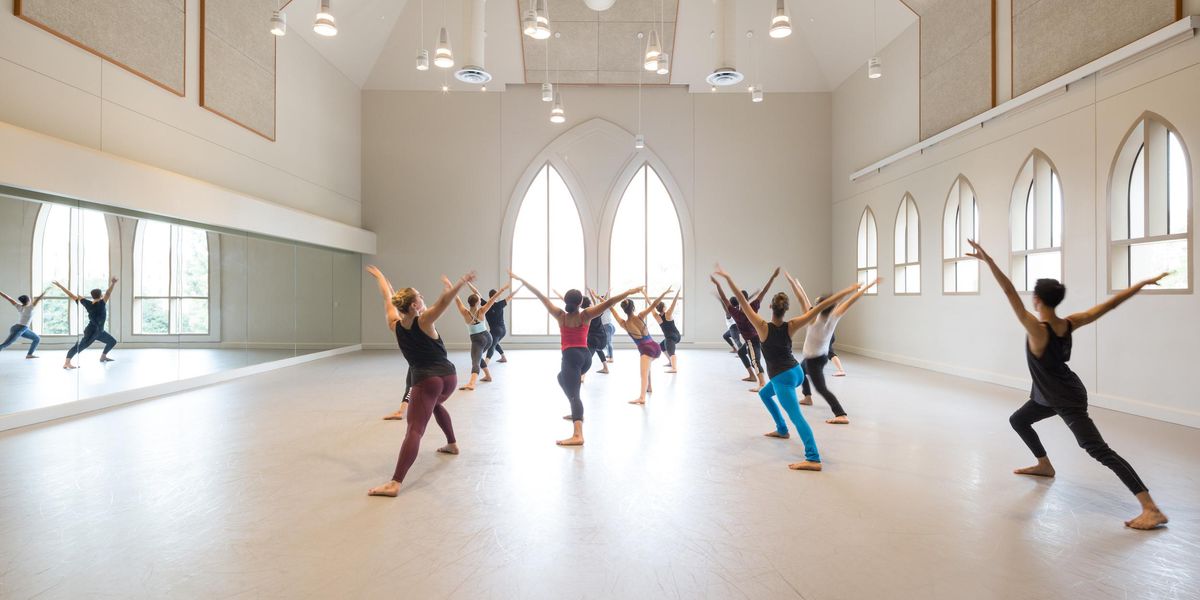From Oregon to Iceland: Cameron Corbett
Corbett (in red) joined IDC for its repertoire. Here, Johan Inger’s
Walking Mad. Photo by Golli, Courtesy Iceland Dance Company.
Arriving in Reykjavík, Iceland, Cameron Corbett felt like he had landed on another planet. He saw the dramatic contrasts of Blue Lagoon, the volcanic fields of Thingvellir National Park and the majestic mountains surrounding the city.
Growing up, the Portland, Oregon, native had no idea he would ever visit Iceland, let alone make it his home for 17 years. His first major dance job was with Tanzforum Köln in Germany, where he met fellow dancer Katrín Hall. When Hall retired from performing to become the artistic director of Iceland Dance Company, she invited Corbett to be a guest artist. “I knew almost nothing about the company except that the repertoire was exciting,” says Corbett. The original three-month guest contract was extended to six months, then a year, until he was offered a permanent position.
Iceland Dance Company is a small contemporary-repertory troupe of classically trained dancers. Because of its proximity to major dance hubs in other parts of Europe, it is able to commission notable choreographers, while capitalizing on Reykjavík’s small community of artists and dancegoers. The company regularly performs works by Jirí Kylián, Itzik Galili, Sidi Larbi Cherkaoui and artistic advisor Erna Ómarsdóttir. “There is a lot to appreciate in almost every production,” says Corbett. “Some have an especially fulfilling rehearsal process, some are more fun to perform.” The company puts up three productions per season, with limited touring in Europe.
Corbett has also found a choreographic home at IDC, which has commissioned him to create dances in collaboration with composers, visual artists, actors and directors—opportunities that, he notes, might not have been possible at a larger company, in a larger country. And he has been able to seek out artistic projects beyond dance, including a stint as coach for Iceland’s national ice skating team. Plus, there are the governed benefits that working artists in Europe are afforded. Corbett has a 12-month contract, six to eight weeks of paid vacation and health care.
Corbett also found himself surprised by how kind—he emphasizes “not only friendly, but kind”—the people of Iceland are. Though his Icelandic was, and remains, “horrible,” the language barrier has been small since most Icelanders speak English, too. And, thankfully, he says, the sense of humor leans toward the irreverent. “Any social mistakes I made when I arrived were either ignored or enjoyed immensely.”
But this is not to say that life in Iceland didn’t take some adjusting. Because Reykjavík sits on a peninsula, temperatures rarely fall below freezing, but it is just as rare for it to be warmer than 60 degrees, even in summer. Most difficult was adjusting to the abundance of sunlight—and lack of it. Once, Corbett woke up from an evening nap, and mistaking 8 pm for 8 am, he went to work, showing up to a locked theater. Since then, he keeps his clocks on 24-hour format and is more diligent about maintaining a regular sleep schedule. “The dark winters and constant sunshine of the summers can play games with your mental well-being,” says Corbett. “I had to learn to keep my schedule and emotions in check.”
Though he’s far from his former home, Corbett says his adopted country and its national dance company suit his personality much better than the United States. “Reykjavík is large enough to create good artists, but not so big as to deter collaboration. The artists here are eager to work together and brave enough to take risks. Maybe because the world isn’t always watching.”




